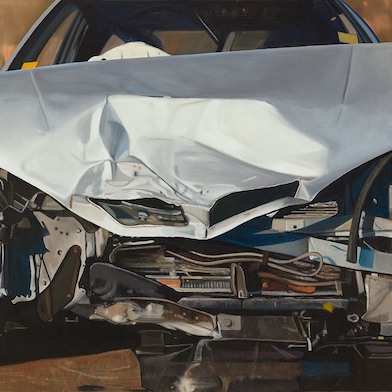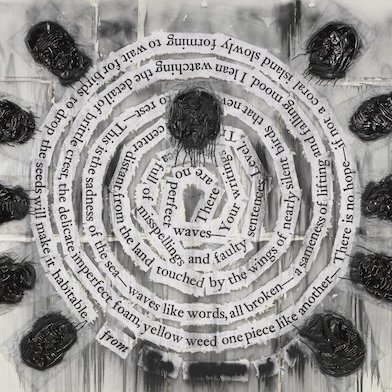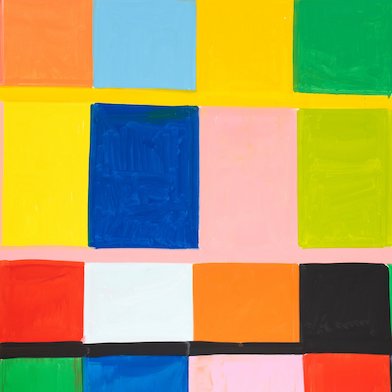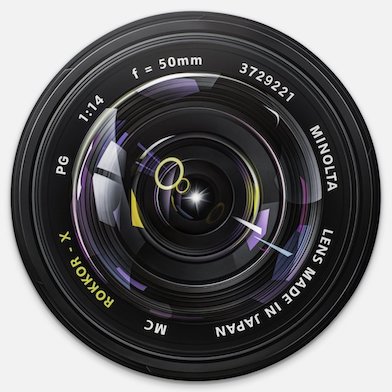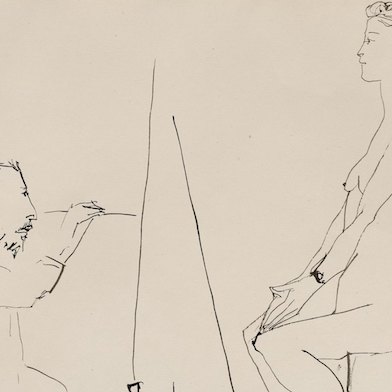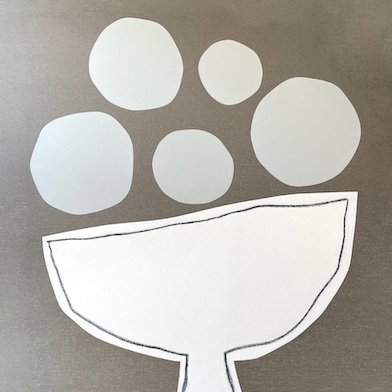
Open: Tue-Fri 10am-6pm, Sat 12-4pm
Visit
Creatures & Masks
Galerie Fabian Lang, Zürich
Fri 1 Mar 2024 to Sat 25 May 2024
Obere Zäune 12, CH-8001 Creatures & Masks
Tue-Fri 10am-6pm, Sat 12-4pm
Artists: Mark Wallinger - Becky Tucker - Bridget Mullen - Loretta - Tahnee Lonsdale - Johnny Izatt-Lowry - Lisa Ivory - Cathrin Hoffmann - Gigax - Werner Frei - Justin Fitzpatrick - Sarah Dwyer - Peter Linde Busk - James Bantone
It is perhaps unsurprising that the absurd, the strange and twisted, and the use of masks or the creation of creatures are to be found in such a peculiarly distinctive form in the work of many artists working today. How much of the tradition and intention of the Commedia dell'Arte can be found in this approach, in this expression? Originating in northern Italy during the Renaissance, its influence is still to be traced through to today; an influence that let to the development of comical figures and tropes throughout Europe in the 17th and 18th centuries. And why so much of it today? It is indeed rather curious that fantasy figures are so widely employed by contemporary painters and sculptors in order to say something about our times. The grimaces, the disguises, the distorted bodies serve as a realisation of the mechanics of the depths of the unconscious, of the manifold self, or as a vehicle of criticism of the powerful. Like the jester Arlecchino, it is a voice or language that allows one to criticise and ridicule, more deeply and far-sightedly than perhaps without a mask. The artist’s ingeniously invented worlds reliably lead us on a curious trail that somehow from somewhere seems familiar at the same time. It is the language of poetics.
For the exhibition, Cathrin Hoffmann has explored the "embodied" phenomenology of body (Körper) and corporeality (Leib) in greater depth. The term body is intended to emphasise the body in its subjective, experienced dimension, in contrast to the purely objective, physical body. The German psychiatrist and neurophilosopher Thomas Fuchs distinguishes between "being a body (Leib)" and "having a body (Körper)". Self-consciousness means looking at oneself from the outside and recognising oneself in the mirror through the eyes of others. This gives rise to the concept of the "person". Translated into Latin, person originally means the mask in ancient theatre and refers to the actor and ultimately to his role.
A person's identity therefore develops in the social world by adopting and gradually analysing the attitudes, mindsets, role designs and role expectations of others. It combines the experience of one's own primary self with the perception and recognition of this self by others. And these two poles of one's own identity never completely coincide. It is precisely this seemingly irresolvable tension that A Congruent Gap is about. So who are we really? And how does the influence of society as a whole play a role in a time characterised by crises in which we are becoming increasingly alienated? In the picture shown, certain elements such as the beak in the form of a shadow, the acrobatic dance movement or the mask-like head are deliberately chosen as references to Arlecchino.
For his work Phagocyte and police officer, Justin Fitzpatrick also took up the idea that identity is formed from the outside, through the power of institutions, the values of a culture or through ideology. In his case, however, it was the philosopher Louis Althusser's and his idea of interpellation that whispered it to him. Specifically, as Fitzpatrick writes, the work is about the idea of phagocytes in our bodies that protect us by swallowing harmful foreign bodies. In the image, a manifestation of such a cell scans a police officer. The police officer and his uniform, which creates identity, serve the artist here as a symbol for the exponentially recurring feeling of mistrust or paranoia in a society. Interestingly, interpellation means "interrogation" in French, i.e. the formal questioning of suspects by the police to establish their identity.
One of the artists who incorporates wordplay, humour, symbolism, philosophy and poetry into his work is Mark Wallinger. Here with probably the most direct reference to the Commedia dell'Arte. It is not even a work that was originally intended as a work; it is more a product of a kind of performance. The occasion was a masked ball organised in his honour for his exhibition in Venice, which I curated at Victoria Miro. Cheeky, clever and skilful as Mark is, he soon came up with an idea that was as witty as it was ingenious: instead of redesigning the traditional masks for the guests, he simply put glasses on the masks, a copy of his own characteristic glasses. And suddenly all the guests were Wallingers, and the time-honoured masks were disguised themselves. The readymade The Optometer was born.
Johnny Izatt-Lowry "gave birth" to a small canvas especially for the exhibition, which houses the face made of folded something. The trompe l'oeil painting itself playfully becomes an object, a mask that cannot be worn. It is located somewhere between our own world and the world of representation.
We are particularly pleased to be able to celebrate the late Werner Frei here. The Zurich artist, who is probably no longer known to a wider audience today, was perhaps better known during his lifetime for his reduced, abstracted landscapes and later for his paintings based on rhythm, colour tone and emptiness. In private, he also created marvellous costumes and masks, a side that has remained largely undiscovered by most. Here we present the last surviving masks by Werner Frei, created in 1982 for the ballet performance "Beauty and the Beast" at his daughter's ballet school.
Using James Bantone's work as an example, the idea of the mask is undermined - it serves as a vehicle for criticism. Crooked teeth, grimacing reliefs grin at us in his Polite Lies series. Smiling is usually associated with joy, but not every smile is an expression of happiness. Hiding can also be the essence of smiling. The smile as a form of concealment. The way the work is made turns the smile itself into a spectacle. It embodies a stereotype. It becomes something grotesque and unpleasantly reflects back on our own behaviour at times. "The idea for the works came when I was reading "Stranger in the village" by James Baldwin, at the point where he talks about smiling at the Swiss villagers to make himself less threatening." (James Bantone)
In the relief by Peter Linde Busk (Denmark), the depiction of mask and creature merge. What looks like a troll is not actually Nordic at all. On the contrary. Busk doesn't think directly about the result before he creates it, it emerges. And so a writhing figure, a distorted face à la Francis Bacon, emerged from an inner turmoil. Afterwards, Linde Busk was reminded of mangas. This refers to the Greek cultural phenomenon, the movement, the music, the subculture and the dance style known as rebitiko. Mangas were a part of the culture that was anti-establishment in every way. Smartly dressed but working class, petty criminals, troublemakers, knife fighters, "...a bit like the gauchos in Borges' novels," says Linde Busk. Or a bit like Arlecchino.
Bridget Mullen met the idea of viewing her pictures, created especially for the exhibition, through the lens of a mask with open arms. "A mask could be a shield, a shell, a tool, a way of embodying that which one aspires to. And since I think of my paintings as self-portraits, the idea of the mask aligns as an interesting metaphor for the shape-shifting and varied manifestations of self that may arrive in painting. " (Mullen) Even if Mullen sees her works as self-portraits, her slippery visual language can hardly be clearly labelled. Shorthand's Breach and Slump's Loop are the names of her two works. It will be an open question whether the titles help to decipher what we see in the works or contribute to the slipperiness.
Sarah Dwyer's works are not too dissimilar. As with Mullen, the process for her often begins directly on the canvas. One mark leads to the next. While Mulllen always begins abstractly and gradually creates more tangible images, Dwyer abstracts originally figurative compositions to the point of almost unrecognisability. Mark-making, infused with intuition and a willingness to experiment, plays an important role in both of them, creating pictures that oscillate between abstraction and figuration. Unusually, in Dwyer's most recent work, the head of a giant emerges, its primal scream throwing the creatures in its path backwards.
Intuition and the unconscious are also the driving force behind Loretta's diverse paintings. Created over a period of 1-2 years, during or after meditation sessions, she puts pen to paper at the same time every morning and lets herself be guided by an inner urge. A self-imposed practice to discover what comes out of it. An investigation of the unconscious. The result is hundreds of curious and fantastic drawings - of portraits, figures or creatures. Automatically. A modus operandi to open up the infinite expanses of the imagination slumbering deep within. Whether wild man, moon head or tentacle-headed man, Loretta immerses us in a world that, depending on the day, and in a punctual manner, presents her hidden mental images that have never been shown before.
A real wild man is also the central motif in Lisa Ivory's most recent works: a hairy, furry other. A naked woman also often appears. They interact in a liminal landscape that is both rural and urban. "I imagine it's a place where distant traffic sounds compete with birds," Ivory describes. As with Mullen, Ivory explains the figures as a form of self-portraiture. Not with the human figures, in truth she identifies more with the creature, as she says herself. "My work attempts to connect my creature self with my human self-to be "hairy on the inside," as Angela Carter would have it." She is also interested in the unusual, the borderline, the ambiguous. Her pictures represent a dialogue between opposing ideas: the wild and the tamed, the included and the outsider - and how all this lives together on this ever more complex rotating globe.
The influence of costume and armour on Becky Tucker's artistic style is palpable. Tucker goes even further back in the history of our planet when she reinvents extinct creatures, medieval-looking armour, suits or ornaments. The works exude a very special mysterious aura. It is not entirely clear where this comes from, whether it is the fascination for the strikingly carefully created details or the glazed splendour of colour. Her works, often described as anachronistic artefacts, often have a feminine form and play with a kind of fetish culture and sci-fi aesthetic. The symbolism and playful use of the grotesque and surreal transcend linear interpretations of her works. Diametrically opposed to a prop, an immediate attraction emanates from her works. One embarks on a path of exploration and yet feels transported into a new experience by a primal force.
The fantastic also plays an overriding role in Gigax's work. Monsters, hybrid creatures and fantasy animals condense into incredible landscape worlds of sometimes epic scale, a universe of wild monster utopias influenced by post-feminism and the art-historical depiction of creatures. She does not stop at the canvas - her creatures also manifest themselves as elaborate ceramic puppets or cardboard sculptures. As with Loretta, her experience of the unconscious, her own emotional life, demands a relationship with reality.
Tahnee Lonsdale takes us to heavenly spheres. Her current paintings illustrate the artist's exploration of spiritual practices, the metaphysical or mysticism and the insights gained from them. She creates, in the truest sense of the word, portraits of spirit creatures or celestial beings. With the work Summer Night’s Dream, the reference to Shakespeare can hardly be concealed, whose epos of the same name was directly influenced by the Commedia dell'Arte.
As we have learnt, the mask and the person are very close. My deepest passion as a teenager and young man was the theatre. Playing, acting, the expressing, the disguises, the meaning, the signifying. I loved interpretation and symbolism in particular, saying something through something else. Also the well thought-out, condensed intensity that I longed for. The sharpening and the dramaturgical height of fall (Fallhöhe). Brecht, Shakespeare etc. One was in search of meaning. And today, when the world is even more complex and mad than it was 20 years ago, not to mention the fact that we are constantly exposed to a flood of communication and images or have the feeling that our lives are determined by data streams, the presenters here offer a cross-section of what is possible in the portrayal of this very cabaret or madness. It is a way of making complexity more tangible, of familiarising yourself with it. Whether intentionally or unintentionally, the artists in Creatures & Masks take up styles that reach back to the Middle Ages and yet are so relevant today.
(Text by Fabian Lang)








